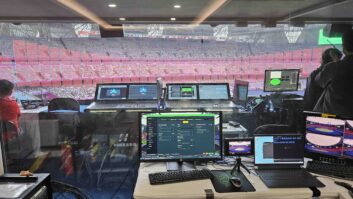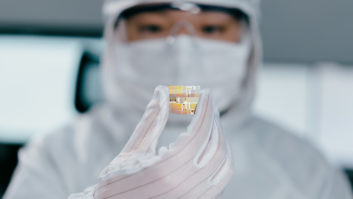
Over the past decade or more reflective projection technologies – such as TI’s DLP, and variants of LCoS technology such as Sony’s SXRD and JVC’s D-ILA – have been widely perceived as offering superior image quality to the transmissive LCD technology found at the heart of most business projectors, many of them powered by Epson panels – of which the company claims to have shipped in excess of 60 million.
Now, Epson has developed – and begun volume production of – a reflective projection technology based on its HTPS (high temperature polysilicon) TFT liquid crystal panels. These measure 0.74” on the diagonal, and are said to be capable of full HD (1,920 x 1,080) resolution. The main structural difference of ‘Reflective 3LCD’ is that reflective panels have a reflective electrode instead of a transparent electrode on the TFT substrate.
While Epson had made great strides with its transmissive HTPS technology in terms of contrast ratio – a key careabout for home theatre aficionados – its new technology is implicitly designed to offer even more in this area, with Epson talking about the panel itself having a device-level contrast ratio of 100,000:1 – in other words, it can deliver this level of performance without resorting to the ‘tricks’ that are often used to maximize contrast ratio.
Further potential advantages for this new technology include the fact that elements of the TFT array can now be positioned behind the pixels, resulting in a much higher ratio between image information and visible pixel structure, giving smoother images – something which has long been a differentiator for DLP and LCoS. Reflective technologies are also widely believed to be better at dealing with heat – offering the promise of more powerful projection lamps and brighter projectors (today’s brightest projectors are based on DLP technology). A third advantage is that pixel switching speeds are likely to be faster – another characteristic of reflective technologies – such that motion blur will be minimized.
“The launch of Epson’s new 3LCD Reflective technology marks an exciting step-change for the projection industry, bringing significant advances in contrast ratio and picture quality to ultimately heighten the home cinema experience,” said Alexandre Di Caro (pictured), product manager for home cinema projectors at Epson. “Reaching highs of up to 1,000,000:1 in dynamic contrast ratio, the technology aids high contrast in dark scenes, enabling a picture that is faster, smoother and quieter than ever before. Likewise, the precise alignment of the inorganic layer in the liquid crystal panel, efficiently transfers the exact amount of light required, creating deep and silky black tones.”
“Projectors using the new 3LCD Reflective technology also benefit from a more compact optical engine, which means they can easily be positioned on a small shelf or restricted ceiling mount,” he continued. “We’ve recently launched the Epson EH-R4000 and Epson EH-R2000 home cinema projectors, both of which include the new 3LCD Reflective panel technology and are available to buy from January 2011.”
Initial products, then, are unsurprisingly aimed at the home theatre market. However, for commercial installations where video quality is an important consideration, they are also likely to find favour – and whether Epson will elect to take advantage of the higher resistance of reflective technology to heat, and compete in the very high brightness auditorium/conference centre market currently dominated by DLP and LCoS remains to be seen.







